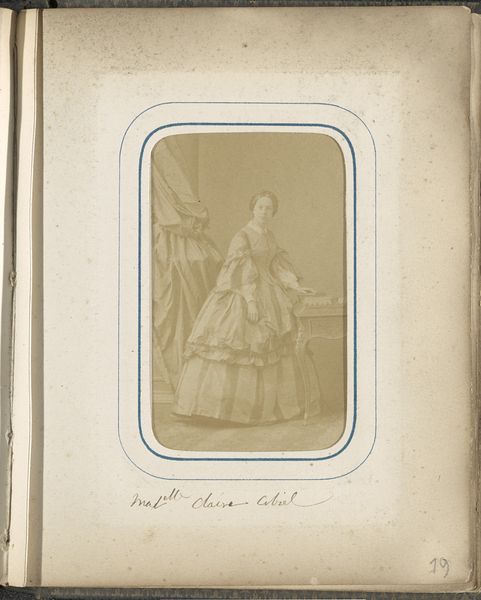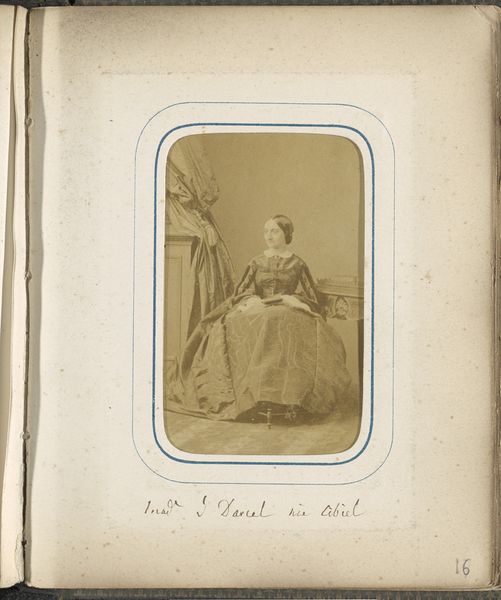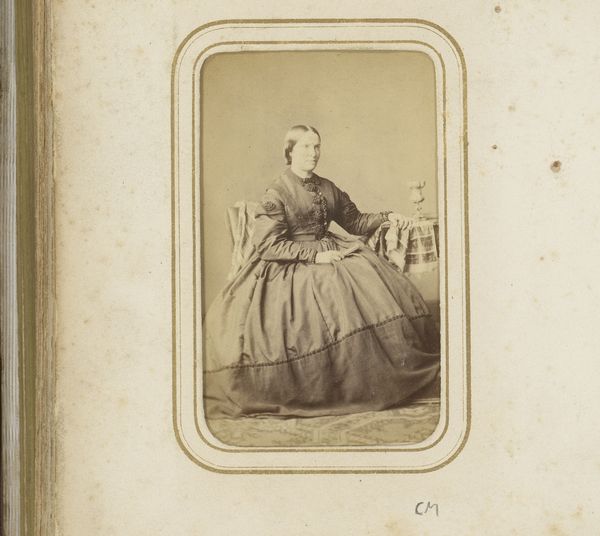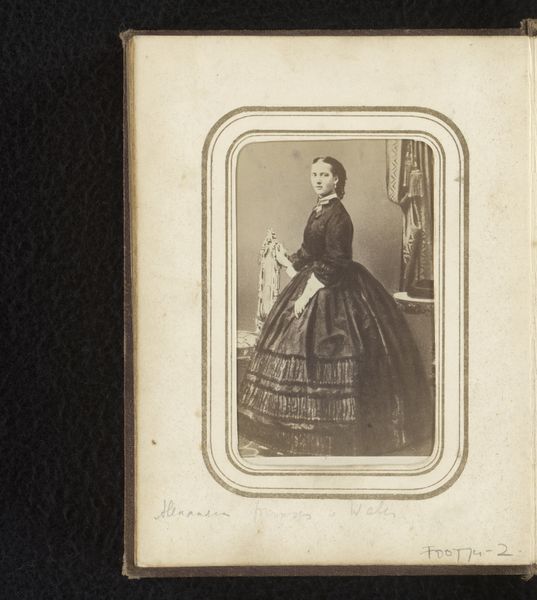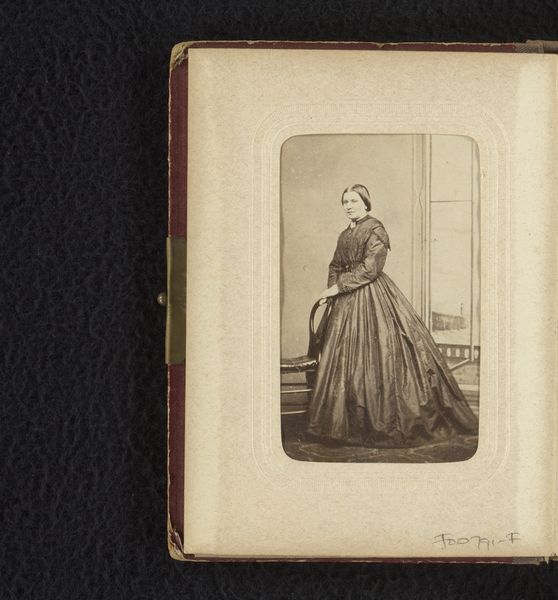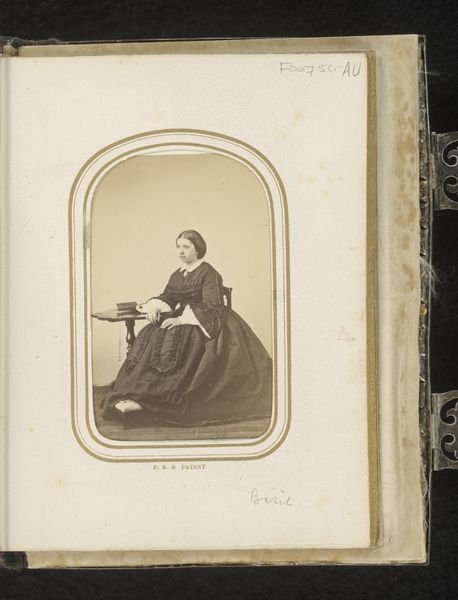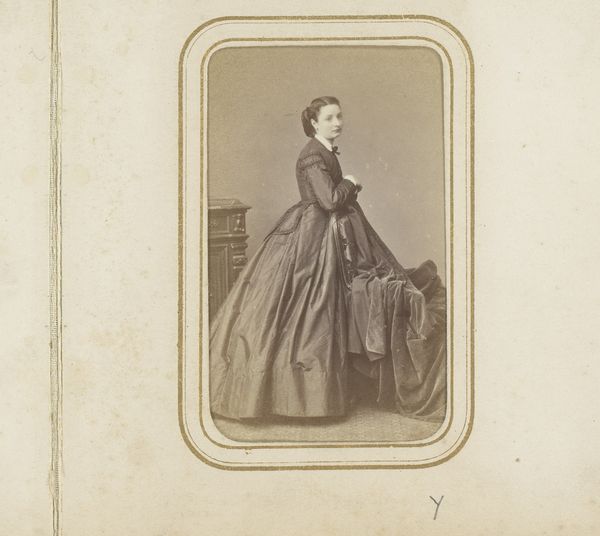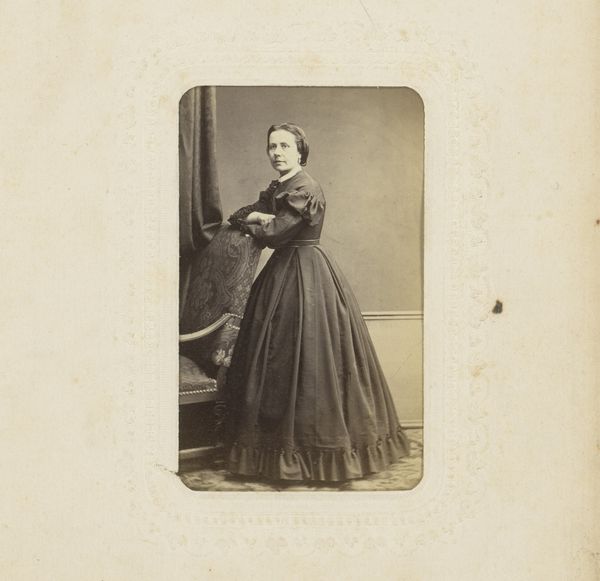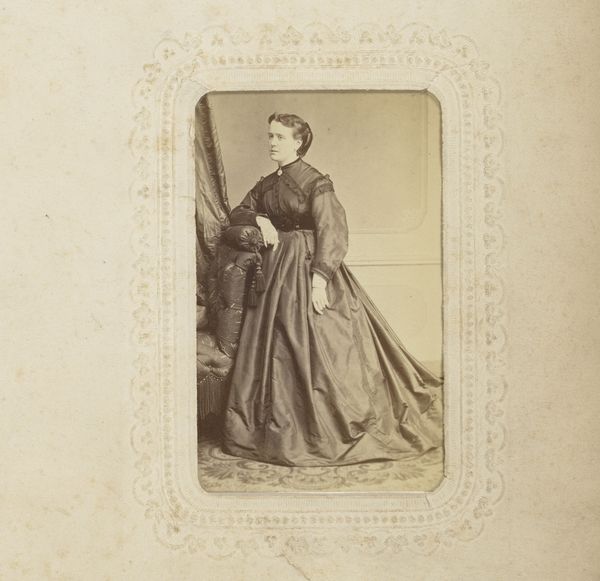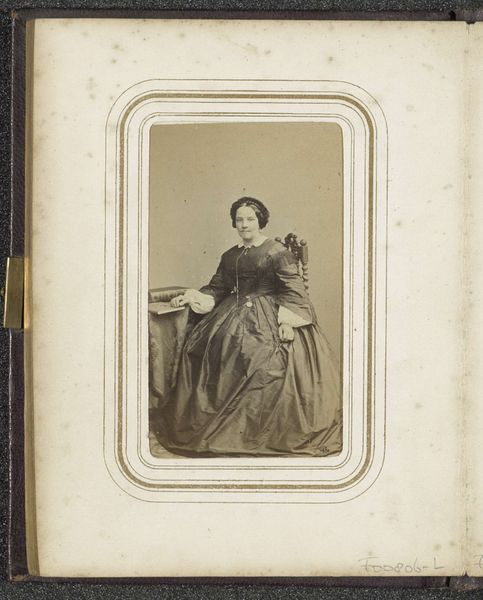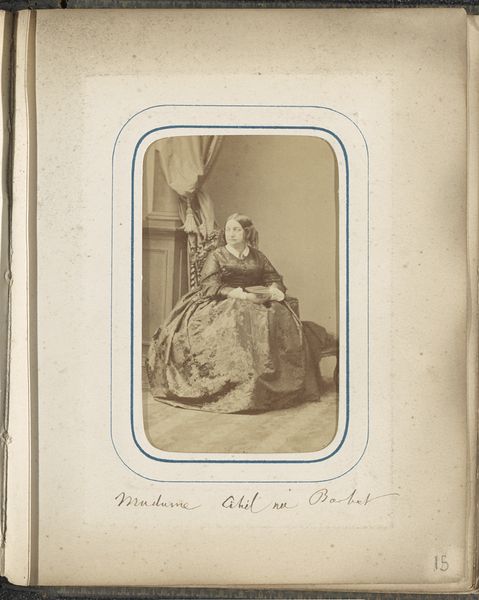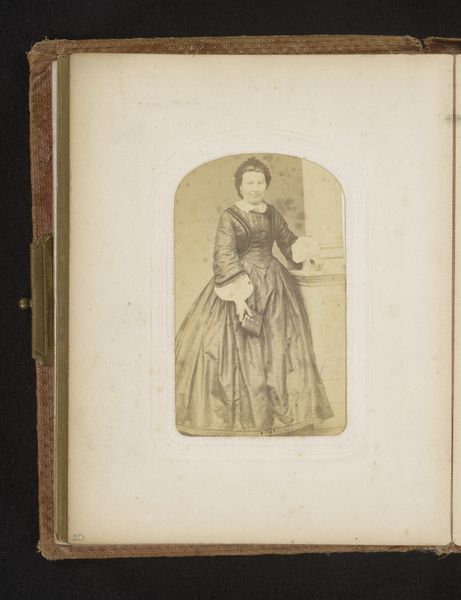
photography, gelatin-silver-print
#
portrait
#
photography
#
gelatin-silver-print
#
dress
#
realism
Dimensions: height 99 mm, width 61 mm
Copyright: Rijks Museum: Open Domain
Editor: So, here we have a gelatin-silver print from around 1860-1865, "Portret van mevrouw Jean Darcel" by Disdéri & Co., housed in the Rijksmuseum. There's something almost austere about it, despite the formality. What grabs your attention in this portrait? Curator: For me, this image speaks volumes about the burgeoning middle class and their aspirations for social representation through photography in the mid-19th century. Think about the cultural context: photography, while still relatively new, offered a democratization of portraiture previously only accessible to the wealthy elite through painting. How does the studio setting – the draped background, the slightly awkward posing – contribute to your understanding of the sitter and the intended message? Editor: It's definitely posed. The chair seems more for propping than sitting, and she isn't making direct eye contact. It’s almost like she's performing the role of "respectable lady". Curator: Precisely. And that "performance" is key. Early photography studios like Disdéri & Co. were acutely aware of the power dynamics inherent in image-making. They were crafting a specific image intended for public consumption, but also for familial and social memory. The details of her dress, the slightly staged posture, the backdrop – it's all meticulously constructed to convey status and respectability within a specific social milieu. This isn’t just about capturing a likeness; it's about manufacturing a social identity. Do you think that resonates today? Editor: Absolutely! We’re still very aware of the message our images send on social media. It's fascinating to see the roots of that in these early photographic portraits. Curator: Exactly! The way we create and consume images hasn’t fundamentally changed, we are just using different mediums. Think about how this image circulates within the museum context: what kind of meaning is created when we look at "Portret van mevrouw Jean Darcel" in the 21st century? Editor: That’s a good point. I initially saw an austere woman, but now I see a carefully constructed representation designed for a specific audience and time. It has really become much more about social class, image making, and social ambition than about her specifically. Curator: Indeed. It forces us to question who gets to be seen, how they are seen, and who controls the means of representation.
Comments
No comments
Be the first to comment and join the conversation on the ultimate creative platform.
